CAMILLIAN CENTRES for PASTORAL CARE IN HEALTH:
MISSION, HISTORICAL PERSPECTIVES and NEW CHALLENGES
Fr. Angelo Brusco
Introduction
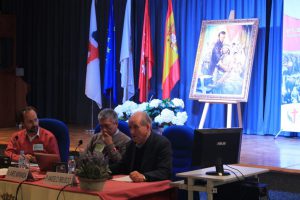 When a professional of a help relationship – a psychotherapist, a psychologist, or a counsellor – welcomes a person who turns to him or her to be helped, the first step that he or she is called to take consists of making an accurate analysis of the request. Why has that individual decided to come to ask for help: did he or she come on his own initiative, pushed by his or her mal de vivre, or has he or she been advised or obliged to do this by other people – parents, a spouse, children, superiors…?
When a professional of a help relationship – a psychotherapist, a psychologist, or a counsellor – welcomes a person who turns to him or her to be helped, the first step that he or she is called to take consists of making an accurate analysis of the request. Why has that individual decided to come to ask for help: did he or she come on his own initiative, pushed by his or her mal de vivre, or has he or she been advised or obliged to do this by other people – parents, a spouse, children, superiors…?
I, too, when I was asked to address this assembly with a paper on the subject ‘Camillian Centres for Pastoral Care in Health: Mission, Historical Perspectives and New Challenges’, sought to understand what was expected of me by those who had made this request. Perhaps, I said to myself, they expect the point of view of someone who in practical terms has accompanied centres for humanisation and pastoral care from the outset, fostering their development in the Camillian world and personally experiencing the joys and the sufferings that arise from these institutions of the Order. Basing myself on this interpretation, I developed the subject with simplicity but also with commitment, trying to imitate ‘the owner of a house’, about whom the gospel speaks, ‘who brings out of his storeroom new treasures as well as old’ (Mt 13:52).
Charism and Ministry
The point of departure of my paper is the distinction between charism and ministry. A charism is a gift that Institutes have received from God through the mediation of their men or women founders to live the gospel according to forms that actualise particular aspects of the person and the behaviour of Jesus. As we know, the Camillian charism is the gift that our Order has received from God through the mediation of St. Camillus to bear witness in the world to the always present love of Christ for the sick (Const., n. 1). The charism matures, that is to say it is expressed in ministry, in a set of projects and initiatives directed towards giving concreteness to the insight of the Founder. For Camillians, ministry finds its actuation in works of mercy for the sick (Const., n. 42). Whereas the charism is characterised by stability, ministry belongs to the category of historicity, being called to express itself through forms that are appropriate to the changed conditions of the times. Faithfulness to the charism must, therefore, be creative, making the religious willing and ready to find new forms of ministry that correspond to socio-cultural and religious changes. The Camillian Constitution, at article 5, indeed, on the one hand inculcates the duty of faithfulness to the charism, and, on the other, emphasises the need to update ministry in harmony with the spirit of the Founder and the requirements of inculturation. One is dealing here, as one author has well stated, with ‘reuniting roots with wings’,[1] that is to say knowing how to conjoin tradition and newness in a harmonious way. The roots symbolise tradition whereas the wings speak about innovation and projects. The roots without the wings lead to conservatism and a maintenance of the status quo; the wings without the roots lead to utopia, that is to say to nowhere.
One example can further illuminate what has just been observed. Until the beginning of the twentieth century, our Order was prohibited from constructing and managing its own care-providing works. This prohibition corresponded to the explicit wishes of St. Camillus. But this is what happened at the end of the nineteenth century: first in Lyons and then in Cremona two social/health-care institutions arose. What caused this initiative was the inability of the brothers to exercise their ministry in public hospitals because of a veto of the government. A circumstantial factor had opened a new window in the edifice of the charism. At the General Chapter of 1910, the following question was posed: do these works correspond to the Camillian charism? After a spirited discussion an answer in the affirmative was arrived at by which these ‘houses of health’ were declared opportune places where one could fully exercise our ministry.[2] With a good spirit of discernment the then Superior Generl, Fr. Vido, perceived a sign of the times when he spoke the following words: ‘After examining the new ministries, we may say once again: we can certainly face up to new pathways as long as the old ones are not abandoned. As a result, new ministries must be added to the old, so that our Institute is more extensive and not changed’. This was a fine way of emphasising the importance of the wings, that is to say the maturing of new ministries, not detached, however, from the roots, that is to say from the Camillian charism.
The same phenomenon was witnessed with the institution of the centres for pastoral care and humanisation. How did we reach these initiatives which have already achieved a satisfactory outcome within the Order, as is indicated by the conference that we are now celebrating? To answer this question we have to consider first of all the relationship of our Institute with culture. During the first decade of the life of this Institute our Founder was convinced that love was enough to do good to sick people and doubted whether the Order should embrace the study of philosophy and theology. Indeed, he was afraid that ‘with the engrossing of our religious in these things, with time they would grow cold in their love for the poor and the Institute’. But in the year 1594, as we are told by his first biographer Sanzio Cicatelli, Camillus had a new inspiration from God. He understood the advantages that study could have for ministers of the sick, one of which was a greater ability to come to the help of sick people who had doubts about their faith. The more our religious were erudite, the more they would understand the pearl that they had in their hands and the more they would commit themselves in the promotion of ministry. In truth, love looks for learning and technology to serve in a better way, not to shine but to illuminate.
The conversion of our Founder, however, was not sufficient to create within the Institute a tradition that was favourable to the formation that was needed to make an effective contribution to the culture of the health-care world. With a few exceptions, the traditional Camillian was a religious who relied more on practice than theory, a generous worker who spent hours at the bedsides of the sick, not hesitating to address dramatic situations, and for this reason he granted less time to study and formation. How can we forget the array of Fathers and Brothers who sacrificed their lives helping the plague-stricken?
 What has just been said does not mean that a significant contribution was not made by Camillian religious to culture and pastoral formation. During the seventeenth and eighteenth centuries, indeed, there was a happy flowering of textbooks on pastoral care in hospitals, some of which for two centuries in Italy and Spain were the most widely disseminated manuals on the spiritual accompanying of sick people.[3] The works of our Fathers – amongst whom Novati, Solfi, and Bosch de Centellas y Cardona – helped to create ‘the tradition of pastoral care that was specific to the Order’. Equally, there was no absence of happy initiatives in the field of teaching at an academic level. For more than a century, indeed, at the University of Lima the Camillians were holders of the chair of morality, publishing a number of books which became classics in the field. We know that in Spain some religious were lecturers at the University of Salamanca. In the field of animation, as well, the history of our Order witnessed the creation of associations of health-care workers to whom human and Christian training was thereby assured. These were significant contributions, which were largely connected, however, to the initiatives of creative individuals: they did not correspond to a specific strategy of the Order.
What has just been said does not mean that a significant contribution was not made by Camillian religious to culture and pastoral formation. During the seventeenth and eighteenth centuries, indeed, there was a happy flowering of textbooks on pastoral care in hospitals, some of which for two centuries in Italy and Spain were the most widely disseminated manuals on the spiritual accompanying of sick people.[3] The works of our Fathers – amongst whom Novati, Solfi, and Bosch de Centellas y Cardona – helped to create ‘the tradition of pastoral care that was specific to the Order’. Equally, there was no absence of happy initiatives in the field of teaching at an academic level. For more than a century, indeed, at the University of Lima the Camillians were holders of the chair of morality, publishing a number of books which became classics in the field. We know that in Spain some religious were lecturers at the University of Salamanca. In the field of animation, as well, the history of our Order witnessed the creation of associations of health-care workers to whom human and Christian training was thereby assured. These were significant contributions, which were largely connected, however, to the initiatives of creative individuals: they did not correspond to a specific strategy of the Order.
We have to come the second half of the last century, above all after the celebration of the Second Vatican Council, to witness the maturing of the belief according to which Camillian religious are called to link evangelisation of the world of health and health care to necessary and irreplaceable closeness to the sick through the animation and training of the personnel who work in health-care and social-health-care institutions, through research, and through the teaching of disciplines that are linked directly or indirectly to health, to pastoral care in health, to ethics and to bioethics. In this way a large number of projects for formation and animation emerged: courses, papers, conferences…in almost all the countries in which there was a Camillian presence.
The centres for humanisation and pastoral care came into being to assure coordination, continuity and intensification for all of these initiatives for formation and animation. And it was at this point that a question arose: do these activities which belong to the area of action of our centres for formation – from academic centres such as the Centro Universitario Sâo Camilo of San Paolo and the Camillianum of Rome to other non-academic centres which flowered in Italy, Spain, Austria, Burkina Faso, Colombia, the Philippines, Kenya, India, Peru, Thailand – form a legitimate part of the Camillian ministry as this is outlined in our Constitution? I have no hesitation – and I have on a number of occasions stated this – in providing an answer in the affirmative to this question, even though I realise that the mentality of the Order still needs to change in this area. Indeed, I have the impression that our Institute supports this trend – and the creation of the centres is proof of this – but that it has not yet really entered the process that this trend points to.
The confirmation that we are on the right track comes from a variety of sources. First of all from our Constitution, and in particular the General Statutes. Anyone who reads these founding texts realises that animation and formation in the various sectors connected with the health-care world are seen as legitimate expressions of the Camillian charism, expressions that are aligned with other forms of ministry, such as nearness to the sick through health-care service and chaplaincies, which, indeed, have a long tradition.
We encounter further encouragement in the Synod on Consecrated Life of 1994, in which I had the privilege to take part. That assembly requested religious to commit themselves, without abandoning traditional apostolates, to the evangelisation of the ‘culture of society as a whole’, looking for ‘methods to proclaim the Gospel that are suited to the needs of the various professions in politics, in industry, in the mass media, in education, in law, in ecology, etc.). Amongst the various areopaguses, that is to say settings in which to proclaim the message of the gospel mentioned in the recommendations of the Synod, there is also the world of suffering and health: ‘Taking into account the great cultural transformations of our time, (consecrated men and women) should perceive the urgent need to intervene in the sectors of humanisation and bioethics. They should commit themselves to respect for, and the promotion and defence of, the dignity and the sacredness of the person and human life, from conception until its natural end, in full conformity with the moral teaching of the Church, also promoting centres for formation in health care and specialised pastoral care’ (n. 83). For his part, John Paul II expressed himself in the following way when addressing the members of the Camillian General Chapter of 1995: ‘I exhort you also to link irreplaceable nearness to the sick with evangelisation of the culture of health care, in order to bear witness to the gospel vision of living, of suffering and of dying. This is a fundamental task which has to be carried out by the institutes for formation of your religious families’.
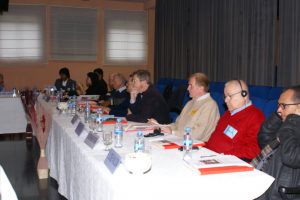 Lastly, we should remember the motion of the general Chapter of 1995 which invited us ‘to develop the Camillianum and the centres for pastoral care and humanisation, as contributions to a culture of life and health based upon the Gospel’ (Operational Guidelines, 3.3.3).
Lastly, we should remember the motion of the general Chapter of 1995 which invited us ‘to develop the Camillianum and the centres for pastoral care and humanisation, as contributions to a culture of life and health based upon the Gospel’ (Operational Guidelines, 3.3.3).
Although there is no doubt that the Camillian centres for humanisation and pastoral care constitute wings, that is to say new ministerial openings that are not detached from the roots, that is to say from the charism, the ways in which these wings stretch out are not homogenous.
Although the Camillianu of Rome and the Centro Universitario Sâo Camilo of Brazil are guided in their choices by institutional criteria that require them to follow specific lines of policy as regards programmes, the other centres enjoy greater freedom in the drawing up of their programmes, independently of where they are located. Indeed, some centres perform their role above all else in the field of pastoral care in health, providing formation and engaging in animation. Other centres aim more at humanisation. There are also centres where side by side with programmes relating to pastoral care, programmes are taught that are connected with the promotion of health in all its expressions. Lastly, one should not forget that different meanings are attributed to the terms ‘pastoral care’ and above all of ‘humanisation’ and that they are understood in different ways. The variety of the centres and their programmes, however, does not hinder us from pointing out certain shared dimensions.
- The Ecclesial Dimension
Like the Order, a centre for pastoral care and humanisation is an institution of the Church. First of all this means that all of the activities engaged in by the centre are directed, either directly or indirectly, to the purpose of the Church, that is to say evangelisation. Awareness of the evangelising dimension of the centres becomes important above all else when the programmes and the initiatives that they promote are not specifically pastoral. There are many lay agencies that offer such programmes in a competent way, basing themselves solely on a humanist vision of life. When, however, the same courses are offered by our centres they must have a special approach and become a way of proclaiming the Gospel.
The evangelising dimension of the formation that is provided in our centres is, however, called to express itself in different ways: the climate that characterises the milieu; welcome and respect for people who, although they do not share our faith, have chosen our centres; personal witness; the choice of subjects and the anthropological approach underlying the lectures; and the spaces offered for spiritual reflection and growth. For the evangelising purpose of a centre for pastoral care to be upheld and ongoing, the teams that work in it should engage in a shared journey of growth, bearing in the mind the special philosophy that animates that centre.
Secondly, our centres are called to provide intelligent, generous and coordinated service to the Church. We are asked to do this by article 57 of our Constitution: ‘Our work is a part of the apostolic activity of the universal and local Churches. Therefore, in the exercise of our ministry, we cooperate with the local Ordinary, following his pastoral directives, and foster coordination and collaboration with other religious institutes, with the diocesan clergy, with the laity and with apostolic associations’. The spectrum of possibilities that is opened here is very broad if one takes into account, for example, all the associations of professionals and volunteers who work in the health-care and social/health-care world. Becoming a point of reference for formation in the field of care for the sick, for humanisation, and for the promotion of health and pastoral care in health, must be one of the objectives of our centres.
- The Camillian Dimension
The centres for humanisation and pastoral care are a part of the Church but they are also a part of the Camillian Order whose mission is to communicate the merciful love of the Lord to those who suffer. This means that all of the initiatives of a centre are guided by a concern to serve, directly or indirectly, the sick and to promote health, trying to highlight and to put into practice that special touch which characterised the behaviour of Camillus and which meant that he could be recognised as the promoter of a new school of charity. For some years a criticism has been spreading according to which there is a tendency which has led Camillian religious to move away from direct service with the sick so as to be involved in activities that are connected with teaching and animation. I do not know how much of this criticism has a foundation. However, it can be seen as a stimulus to find new ways of directly serving people who are afflicted by mal-de-vivre. I am referring here to courses in clinical pastoral education, to centres for counselling as regards help relationships, or other initiatives which allow direct contact with those who suffer.
- The Dimension of Projects and Formation
To achieve the healthy growth of a centre it is vitally important that the programmes come from a clear and substantial formation project whose objective is more formation than information. Information has the task of reducing cognitive ignorance whereas formation is directed towards developing mature attitudes and forms of behaviour. ‘Metaphorically speaking, formation and information are like two wheels on the same cart. If you travel too much on the wheel of information, there is the risk that the cart will be very unbalanced and jarring’. Therefore, courses on the mass media which are of long duration should be privileged that leave a mark on those who attend them. To use a convivial image, the dessert should not prevail over substantial dishes which provide nutrition and make people grow. To achieve this, the following are recommended:
– A continuation of the production of supports – books, articles, etc. – which over the last thirty years have enriched the literature in the field of service to the sick and the promotion of health with interdisciplinary approaches.
– Some topics should be further explored, both from an anthropological point of view and from a psychological, theological and pastoral point of view. I am referring above all to the humanisation of service to sick people and the spiritual accompanying of people who suffer.
– Research should be promoted and without this we run the risk of being repetitive and self-referential. –
– We should aim at excellence through the ongoing formation of those who provide formation, personal formation and group formation. This should be promoted in various forms, with the contribution, as well, of competent people who are from outside the centres.
- The Missionary Dimension
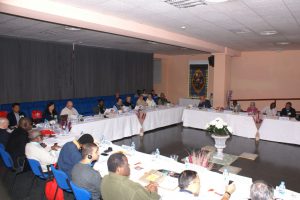 A Camillian centre for pastoral care and humanisation is a beautiful thing when it knows how to look beyond its geographical boundaries in order to intervene in those areas – of its own nation and abroad – that are most lacking as regards resources for formation. Something has been done, and continues to be done, in this direction but perhaps it would also be appropriate to strengthen this type of intervention in those countries in which Camillians do not live, trying to create the conditions for a continuity in projects for formation.
A Camillian centre for pastoral care and humanisation is a beautiful thing when it knows how to look beyond its geographical boundaries in order to intervene in those areas – of its own nation and abroad – that are most lacking as regards resources for formation. Something has been done, and continues to be done, in this direction but perhaps it would also be appropriate to strengthen this type of intervention in those countries in which Camillians do not live, trying to create the conditions for a continuity in projects for formation.
- 5. The Dimension of Cooperation
In the past this dimension has been much discussed. Even though the projects that have been drawn up in this area have not had the results that were expected, there has been no absence of initiatives involving cooperation which for the most part have involved twinning, the exchange of books, economic aid, and above all else courses offered by European centres to centres in Africa, Latin America and Asia. The failures of the past can perhaps be attributed to the fact that only the Camillianum was entrusted with the responsibility for the animation of centres for pastoral care and humanisation. It is not my intention here to propose other more effective formulas, believing that this conference is the most opportune setting to achieve this objective. I will confine myself solely to recommending that we do not become victims of the Okawango Kalahari phenomenon. The River Okavango has its source in the mountain regions of Angola (Africa) and finishes in a very fine delta of the hinterland, but its waters never reach the sea and disappear in the Kalahari desert. Applied to the subject of this paper, this metaphor tells us that without a move to action there is also the risk that planning will turn out to be ineffective.
Conclusion
The American psychiatrist Irvin D. Yalom relates that he took part many years ago in a cookery class by an Armenian woman and her assistant. Because she did not speak English, the cookery teacher taught through practical demonstrations. Dr. Yalom observed her while she made magnificent dishes and wrote down diligently the contents of the recipes. However when he tried, with the greatest care, to cook those recipes himself he did not manage to achieve the same effects. What gave those dishes of that teacher that special touch which made them so pleasing to the palate? The answer came to him after observing what took place during the course. The teacher cooked the dish with great dignity and confidence and then she gave it to her assistant who, in silence, took it to the kitchen. However, before putting it in the oven she threw over it herbs and condiments. Dr. Yalom was convinced that it was specifically those handfuls of herbs that made the difference between his dishes and those of the cookery teacher…
Many things have already been said and written about our centres for humanisation and pastoral care, and I myself have produced a series of articles on them and I am adding another…Debates have been begun and conferences have been organised, the last of which is the one we are taking part in now, and recipes have been suggested. All of these initiatives are necessary or, at least, useful. However, this does not remove the fact that those who work in these centres can legitimately add that je ne sais pas which they can only find in themselves, testing the environment, consulting people, and – why not? – listening to the voice of the Spirit
This leads me to invite you to enrich the paper that you have just listened to with the positive resources that lie inside you and which cannot be found in papers and books but only in a mind that knows and a heart that loves.
 A Hope
A Hope
At the entrance to a house of spirituality I read the following: ‘Quicumque intrat egreditur melior – whoever enters here leaves it richer’. My hope is that those who experience our centres will leave them reinvigorated in their minds and their spirits.
Thank you!
FOR THE DISCUSSION
- General reactions to the paper.
- In your view, is the ministry of teaching and animation an authentic implementation of the Camillian charism? What are the thoughts on this of the religious brothers of the community and/or Province to which you belong?
- To what extent is the trend towards the ministry of formation and animation accepted by the Order in its various components?
- The people who go to our centres certainly appreciate our services but do they also understand the motivations behind them?
- To what extent do the lay people who work in our centres share the objectives of our MISSION?
- How do you see the future of our centres?
[1] Cf. S. Zamagni, ‘La situazione socio-culturale e sanitaria attuale e le sfide per la chiesa’, in AA.VV., La Chiesa italiana nel mondo della salute. Identità e nuovi percorsi. Atti del Convegno nazionale organizzato dall’Ufficio nazionale per la Pastorale della sanità (Fiuggi, 10-12 maggio 2001), p. Fiuggi, 10-12 May 2001.
[2] Cf. the general archives of the ministers of the Sick, Rome, 1900, f. 94. This General Chapter on the revision of the Constitution inserted an article which emphasised the value of these works, seeing them as a very good opportunity to help the sick corporally and spiritually (ibid., f. 94).
[3] Cf. E. Sapori.




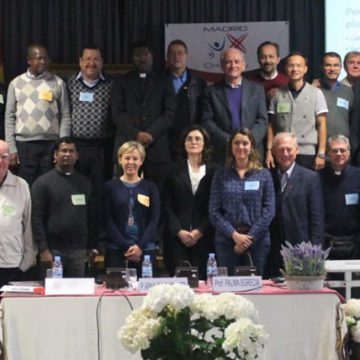






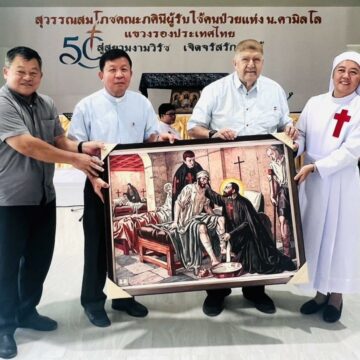
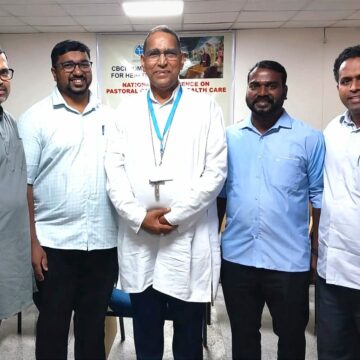
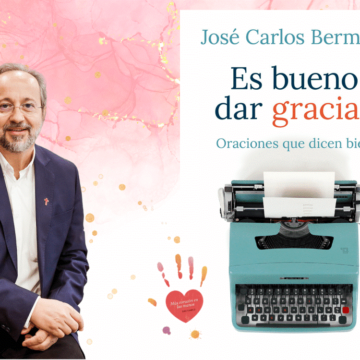

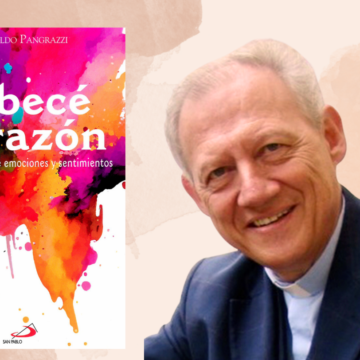
Camillians on Facebook
Camillians on Twitter
Camillians on Instagram